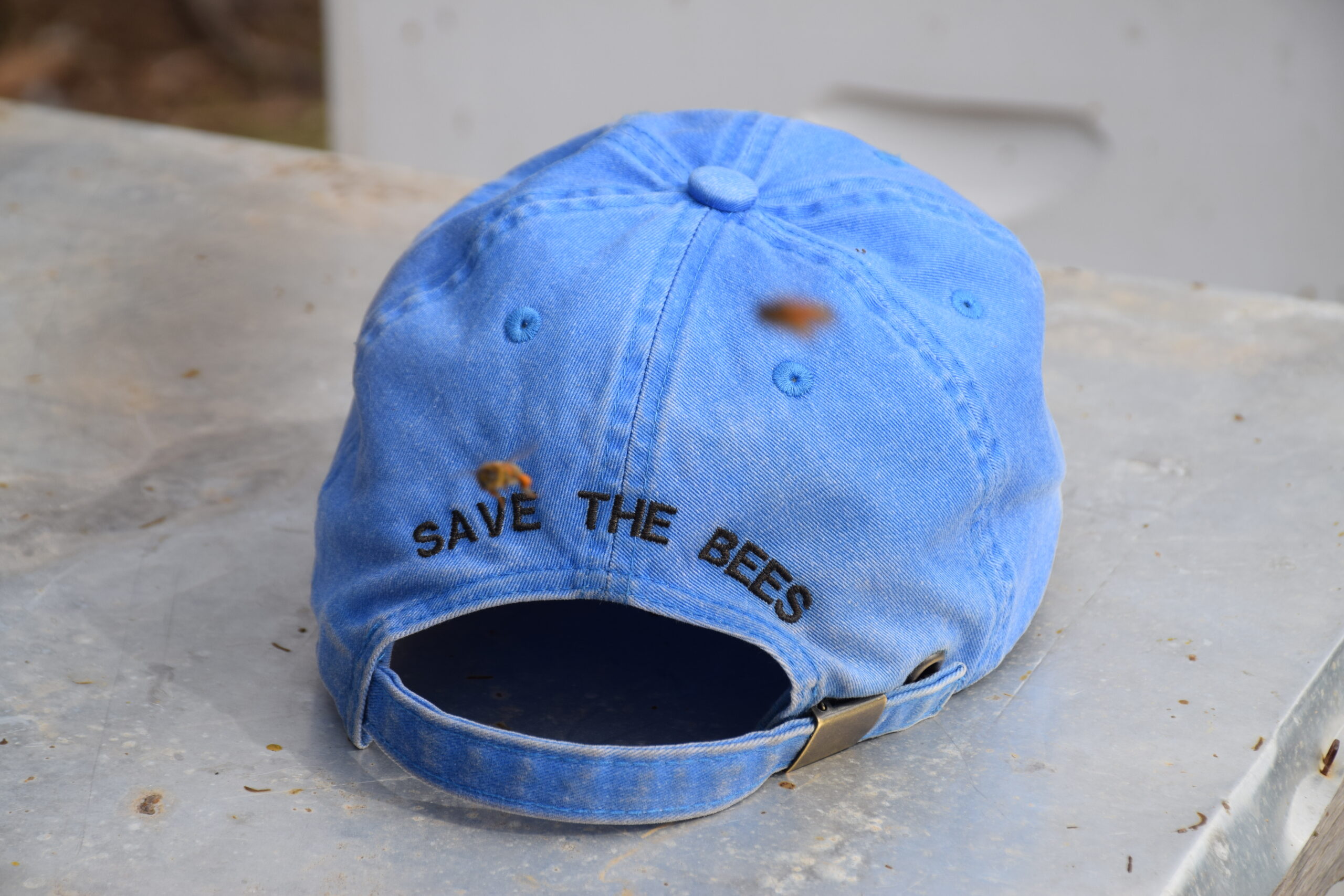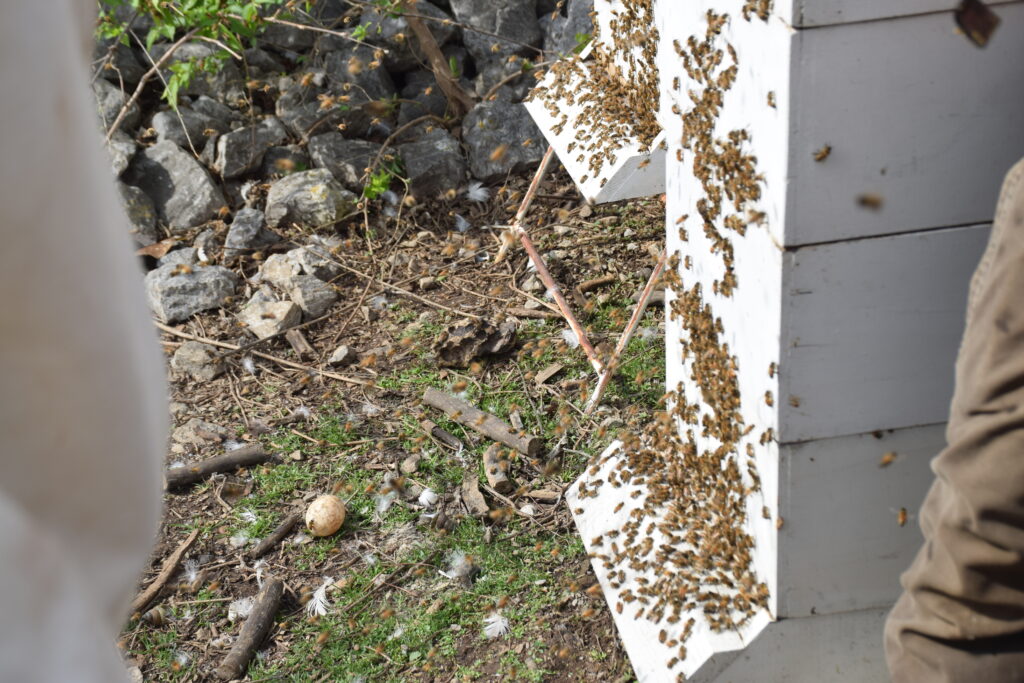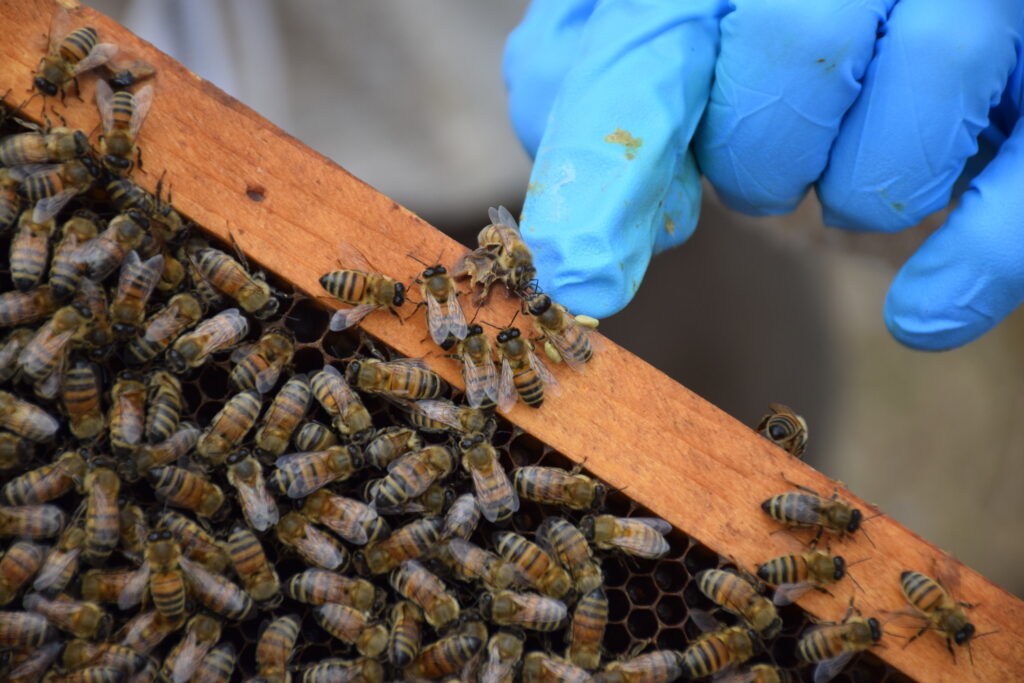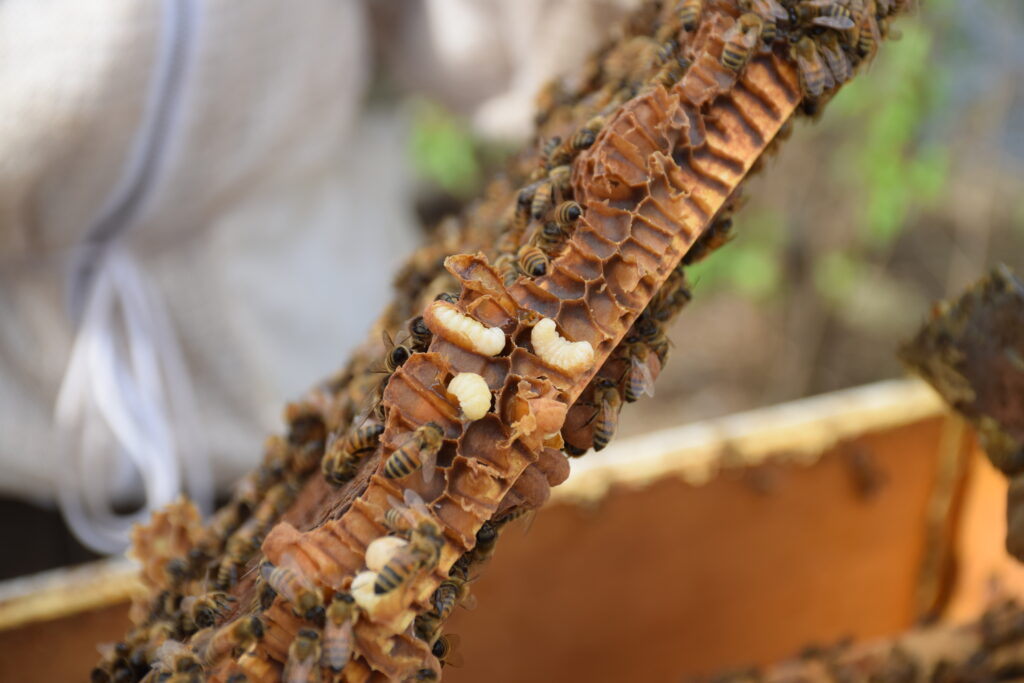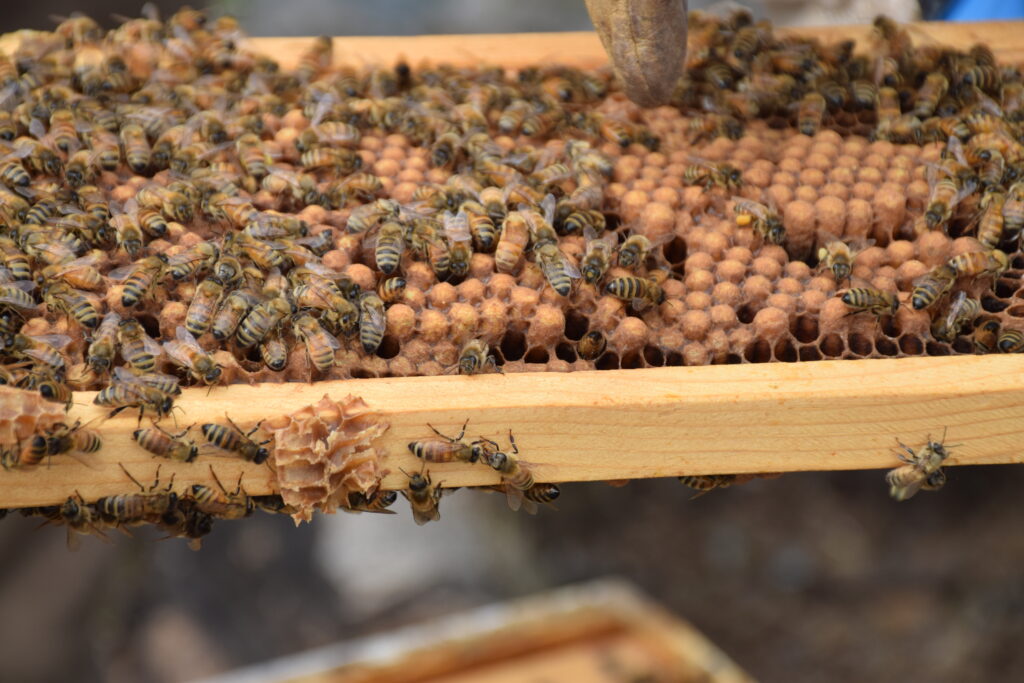
On a small island in the middle of Centennial Park’s Lake Watauga stand five towers of beehives. One of our listeners spotted the hard-to-reach hives and inquired about the bees: Who cares for them? What happens to the honey? Do other parks have hives?
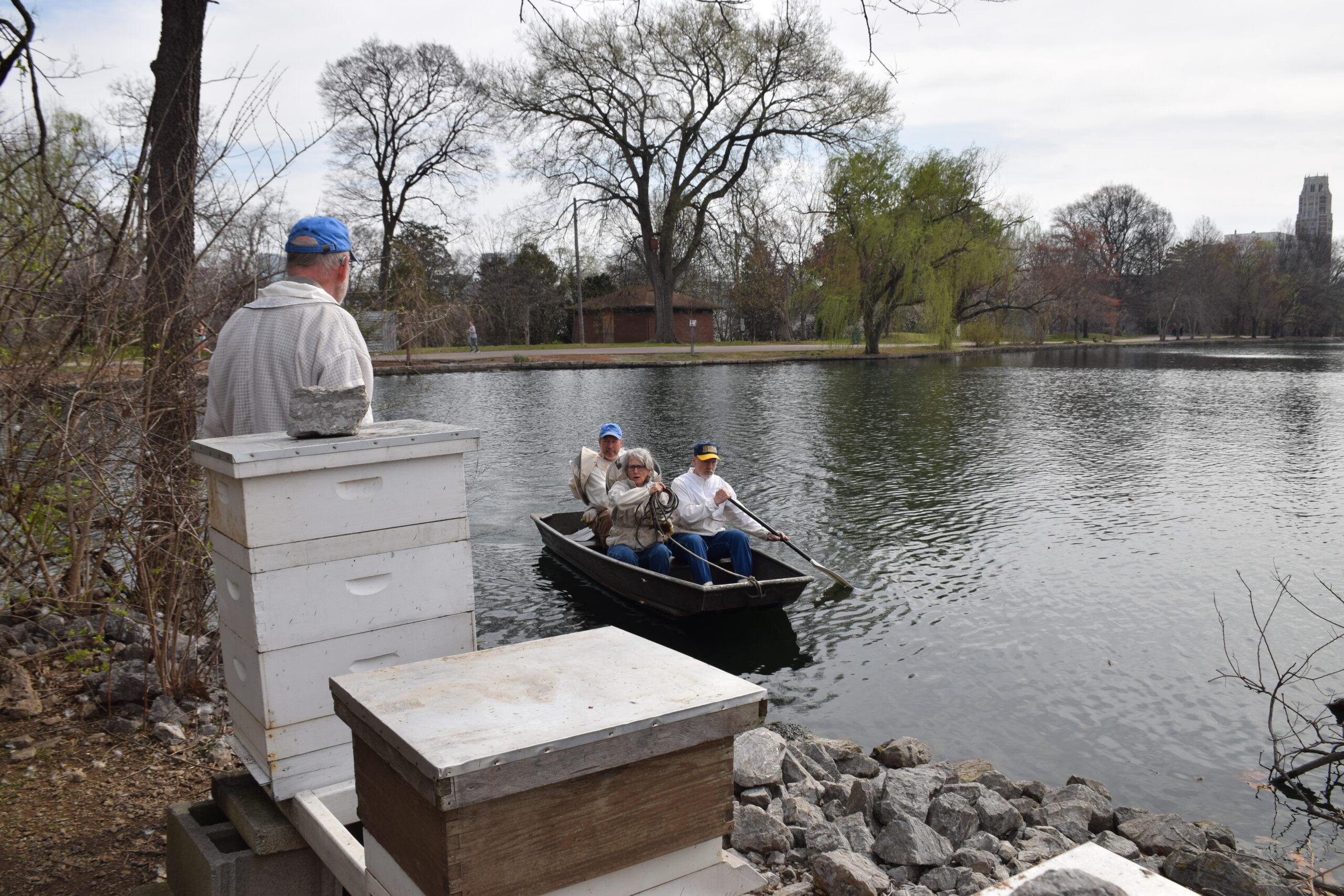
Who’s in charge?
The Nashville Area Beekeeper’s Association, or NABA, is an organization that’s been educating beekeepers and caring for community hives since 1952.
About a decade ago, NABA received a call alerting them to the bees on the island on Lake Watauga. A local woman had been taking care of the island’s population, but she seemed to have disappeared. NABA agreed to take charge.
Seth Cooper, a retired physician, leads the team that cares for these Centennial Park bees. Cooper says that, when they first checked out the hives, they were in “pretty bad” shape.

Now there are five hives on the island — four of which are alive.
Bees normally live in trees, but back in the 19th century, a minister in Pennsylvania figured out that bees like to build excess combs in any space that is over 3/8 inches — an amount known as “bee space.” Hives allow the keepers to ensure the bees are kept right at “bee space” and prevent pollinators from producing excess honeycomb.
In addition to keeping bees, NABA also works to remove swarms from Nashville homes. It’s illegal to destroy a cluster or a swarm of bees. Instead, someone struggling with a swarm is encouraged to call pest control. In Nashville, pest control redirects residents to NABA, who directs volunteers to scoop them up.
Craig Peterson, NABA’s go-to bee collector, says he enjoys explaining to people that the swarms are a natural progression.
“Don’t worry that they’re all going to turn on you or anything,” Peterson says. “They’re very docile at that point. Just scoop ‘em up and give them a new home, and hopefully, they stick around for a while.”

Caring for the hives
Like swarms, the bees out on Centennial Park are fairly amenable — although that may be thanks to the smoker NABA volunteers employ almost immediately. Smoke helps calm the bees, confusing their alarm pheromones.
Bees communicate by smell — the queen, the workers and the brood all secrete chemicals. It’s through this pheromone that worker bees can identify the queen. When keepers disturb the hives, the guard bees send out an alarm pheromone to alert the others of trouble. The smoke disrupts this scent, effectively calming the hive.
During the summer, NABA volunteers head out to Centennial Park once a week. But when we head out on a sunny day in March, it’s the first time the keepers have checked on the hives all winter.
For Seth Cooper, Jennifer Cox, Craig Peterson and Larry Wilson, beekeeping was never their primary profession. All four are volunteers with NABA, offering their time to care for community hives (in addition to those living in their own backyards).
When they’re at Centennial, the beekeepers are checking to make sure everything is in order. That means making sure there is some activity on the front of the hive, checking for worker bees bringing in pollen, checking for egg-laying and brood, keeping an eye on how many bugs are crawling around the hives and checking to see that the queen looks healthy — a crucial aspect of the inspection.
“The success of the hive depends on her,” Peterson says.
The NABA beekeepers mark each queen — there’s one per hive — with a dot. However, the dot isn’t always necessary to identify her because she is significantly larger than the other bees. She almost looks as if she could be a different species — yet her genetics are exactly the same as the rest.
Cooper explains that her size is simply a result of the other bees feeding her excess royal jelly.

The beekeepers make sure the frames are clean, scraping off excess comb to prevent it from cementing over time. They also distribute bee food: a combination of sugar, citric acid, apple vinegar and a manufactured nutritional product they call “Honey Bee Help.”
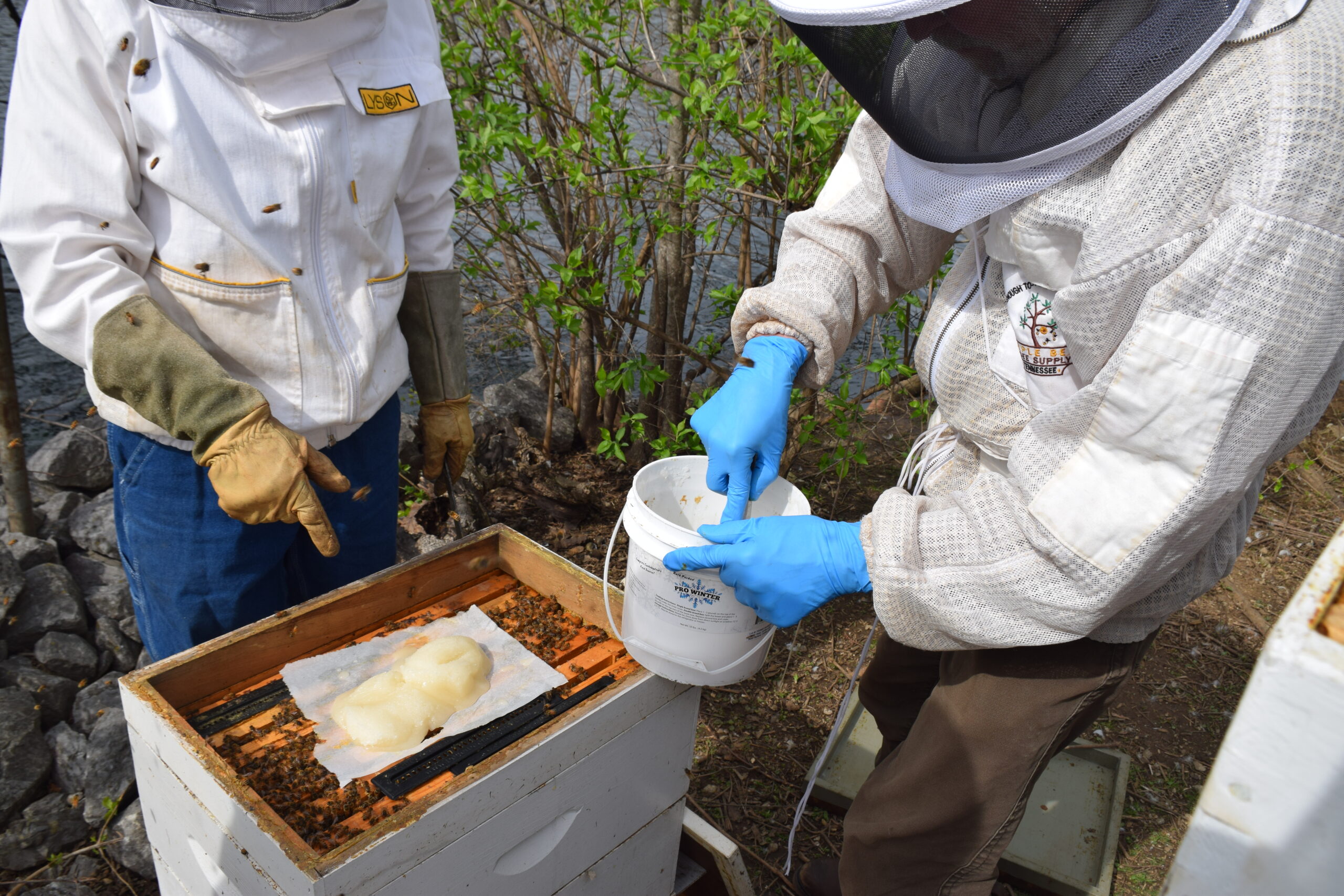
Protecting the pollinators
Some of the most crucial duties of the beekeepers have to do with pest control.
The Varroa mite is a parasitic mite that attacks and feeds on honey bees. Beekeeper Larry Wilson says that it’s the most harmful thing to a hive.
“It’s like a tick. It gets on the bees. And it will suck their energy fat, so they don’t have the stamina to do their job,” Wilson says. “It also will penetrate the shell so that viruses can enter their body.”
The keepers focus a lot of their care on dealing with the mites. When a hive starts to weaken from a mite infestation, they’ll start counting the minuscule mites. When they have three mites per 100 bees, they’ll initiate treatment.
However, the chemicals that kill the mites can harm the bees, too: Recently, a queen quit laying eggs for a month after the treatment was applied. And it can be difficult to time, since you don’t want to apply the chemical treatment when you are also harvesting honey.
The keepers always harvest honey in the summer. It has to be a hot day, otherwise the honey won’t flow. A number of other volunteers from NABA often join to help with the harvest.
The honey produced at the Centennial Park hives can be purchased at the Parthenon’s Museum Store or online.
Centennial Park is just one of several parks in Nashville that feature beehives. Bicentennial Park installed hives in 2021, and Shelby Bottoms is home to more than a dozen hives in three locations. Shelby Bottoms sells the honey at its nature center.
